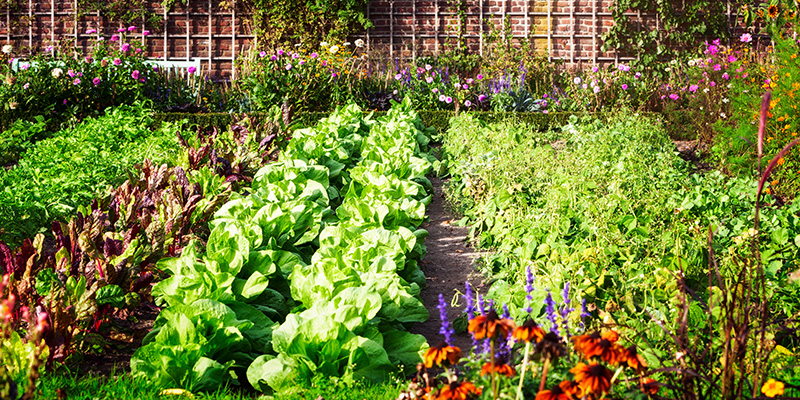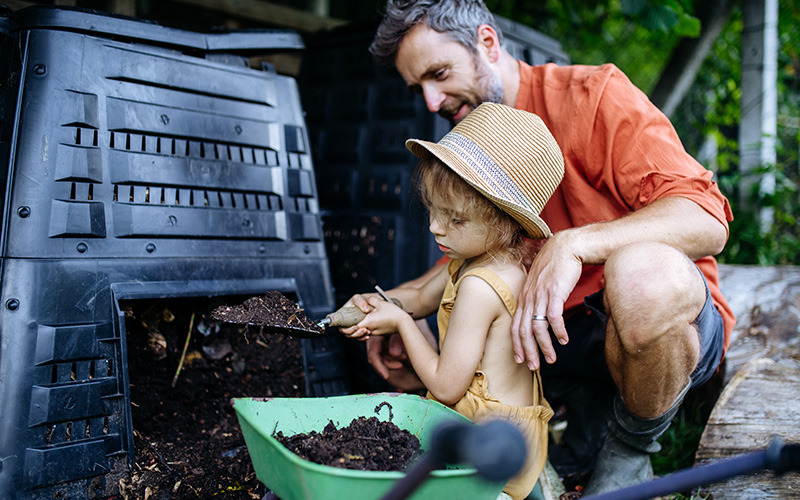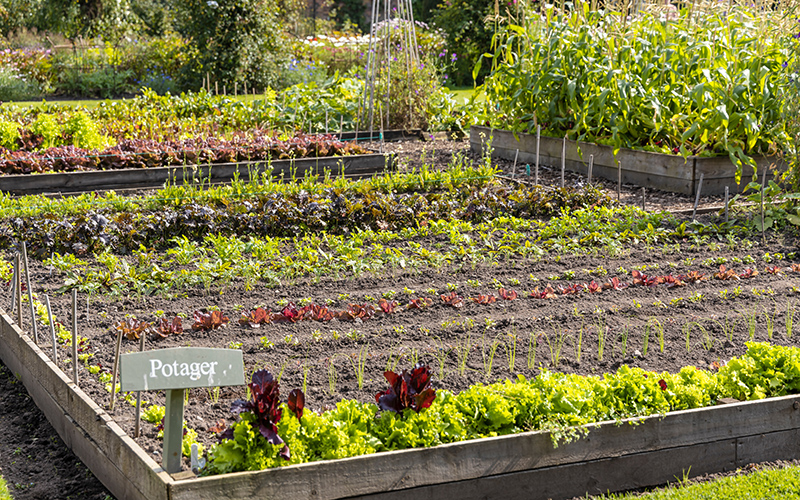Having a backyard vegetable garden can be a rewarding experience, both in terms of saving money on grocery bills and having a direct source of fresh, garden-to-table produce. But for beginners, starting a vegetable garden can be intimidating.
Benefits of Growing Your Own Vegetables
Vegetable gardening is an enriching experience that can save money on groceries and provide health benefits that are hard to find elsewhere. Here are a few key benefits of growing your own vegetables:
- Access to Fresh Produce – Vegetable gardening provides access to fresh produce grown right in your backyard. This means you don’t have to worry about pesticides or other chemicals that may come with store-bought produce.
- Cost Reduction – Growing vegetables can save you money in the long run as you won’t have to purchase products from the store.
- Health Advantages – Eating organic, pesticide-free vegetables can help you to maintain a healthier lifestyle. Eating organic also eliminates the risk of consuming harmful chemicals that may come with store-bought produce.
- Enjoying the Outdoor – Vegetable gardening is a relaxing and healthy pastime that allows you to get outside and enjoy the fresh air. The simple act of observing the development of plants in the wild can be very satisfying.
- Sense of Achievement – There is nothing quite like the sense of accomplishment that comes with growing your own vegetables. It can be a great experience to see your hard work pay off and to be able to eat the fruits of your labor.
Planning Your Vegetable Garden

It’s essential to consider the size of your garden, the types of vegetables you want to grow, and the amount of sunlight and water your plants will need. You’ll also need to decide which gardening method is suitable for you. Here are the three main methods for gardening:
- Traditional Gardening – This is the most common method for growing vegetables. It involves preparing the soil, planting seeds or seedlings, and tending to plants with regular watering and fertilizing. This method can be labor-intensive, but it can also be gratifying.
- Hydroponics – This gardening method involves growing plants in a nutrient-rich solution instead of soil. It requires less water and fertilizer than traditional gardening and can be done indoors or outdoors.
- Container Gardening – This method involves growing vegetables in containers or pots instead of in the ground. Container gardening can be a great option if you have limited space or want to move your garden around. It requires less space than traditional gardening but more frequent watering and fertilizing.
No matter which gardening method you choose, it’s essential to research and ensure you have the right supplies and knowledge to make your garden a success.
Choosing the Perfect Location for Your Backyard Vegetable Garden
When selecting the right spot for your vegetable garden, there are a few things to keep in mind:
- Find an area with plenty of sunlight since most vegetables need at least six hours of direct sunlight daily.
- Ensure the area is large enough to accommodate your garden and has good soil drainage.
- Choose a location that is away from any potential sources of contamination. This could include areas with a lot of traffic or places exposed to pesticides or herbicides.
- Consider the direction of the wind, as this can be particularly important if you’re in an area prone to strong winds.
- Avoid garden locations that are prone to flooding. If your residence is in an area with frequent flooding, it’s best to find an elevated spot.
- Different vegetables have different needs, so make sure the soil in your chosen location is suitable for the vegetables you plan to grow.
- You’ll need to access your garden for watering and harvesting easily, so choose an area close to your home or other water sources.
Soil Preparation for Growing Vegetables

Once you’ve chosen the right location for your vegetable garden, you’ll need to prepare the soil. This is an important step, as your soil’s health will determine your plants’ health.
You’ll need to test your soil for nutrients and pH levels. If your soil lacks nutrients, you can add compost or fertilizer to enrich it. You should also add organic matter, such as manure, moss, or compost, to improve the structure of your soil.
The Best Vegetables to Grow in a Backyard Garden
When choosing the best vegetables to grow in your backyard garden, there are a few things to consider. You should select vegetables that are easy to grow and enjoy eating. The best vegetables to grow in a backyard vegetable garden are:
- Tomatoes
- Peppers
- Carrots
- Cucumbers
- Lettuce
- Squash
- Beans
Tips for Starting a Backyard Vegetable Garden
Now that you’ve chosen the best vegetables to grow in your backyard garden, it’s time to start planning. Here are a few pointers to remember when creating your vegetable garden:
- Start small. Don’t try to grow too many vegetables at once. Start with a few easy-to-grow vegetables and work your way up.
- Plant in the right season. Plant your vegetables in the correct season to ensure a successful harvest.
- Keep your plants well watered. Vegetables need plenty of water to grow, so keep them well watered.
- Rotate your crops. Using the same vegetables in the same spot year after year can lead to soil depletion. Rotate your crops to ensure your soil remains healthy.
- Monitor your plants. Inspect your plants regularly to ensure they are healthy and free of diseases and pests.
Common Garden Pests and Diseases

Your vegetable garden may still be home to pests and diseases. The most common garden pests include aphids, slugs, and cucumber beetles. You should use natural methods such as companion planting or spraying a mixture of water and dish soap. Common garden pests and diseases include:
- Aphids – These tiny insects feed on the leaves of plants, often resulting in yellow or distorted leaves.
- Slugs – These slimy pests attack seedlings and young plants, eating away at leaves and stems.
- Cucumber Beetles – These beetles feed on the leaves and stems of cucumber, squash, and melon plants, leaving behind yellow or wilted leaves.
- Powdery Mildew – This white, powdery fungal disease is caused by a lack of air circulation and is usually seen on the upper parts of leaves.
- Blight – Brown spots on leaves and stems characterize this fungal disease.
- Mosaic Virus – This virus, caused by aphids, causes plants to develop yellow, white, and green-mottled patterns on their leaves.
When Should You Start Your Own Vegetable Garden
Now that you know how to start a vegetable garden, you can plant and grow fresh produce. Not only will you reap the benefits of having a bountiful supply of fresh, home-grown produce, but you will also contribute to reducing your carbon footprint and supporting the environment. And that’s something to be proud of.
So get out there, roll up your sleeves, and get started on your journey to having a flourishing vegetable garden. With the proper preparation, dedication, and a little bit of luck, you’ll be able to enjoy the fruits of your labor in no time. Happy Gardening!
You Can Also Read These:
- Kitchen Gardens Are Back, Here’s How To Get Started
- Organic Mulch vs Inorganic Mulch: What’s Best For Your Garden?
- Practice Companion Planting For A Healthier And Thriving Garden




